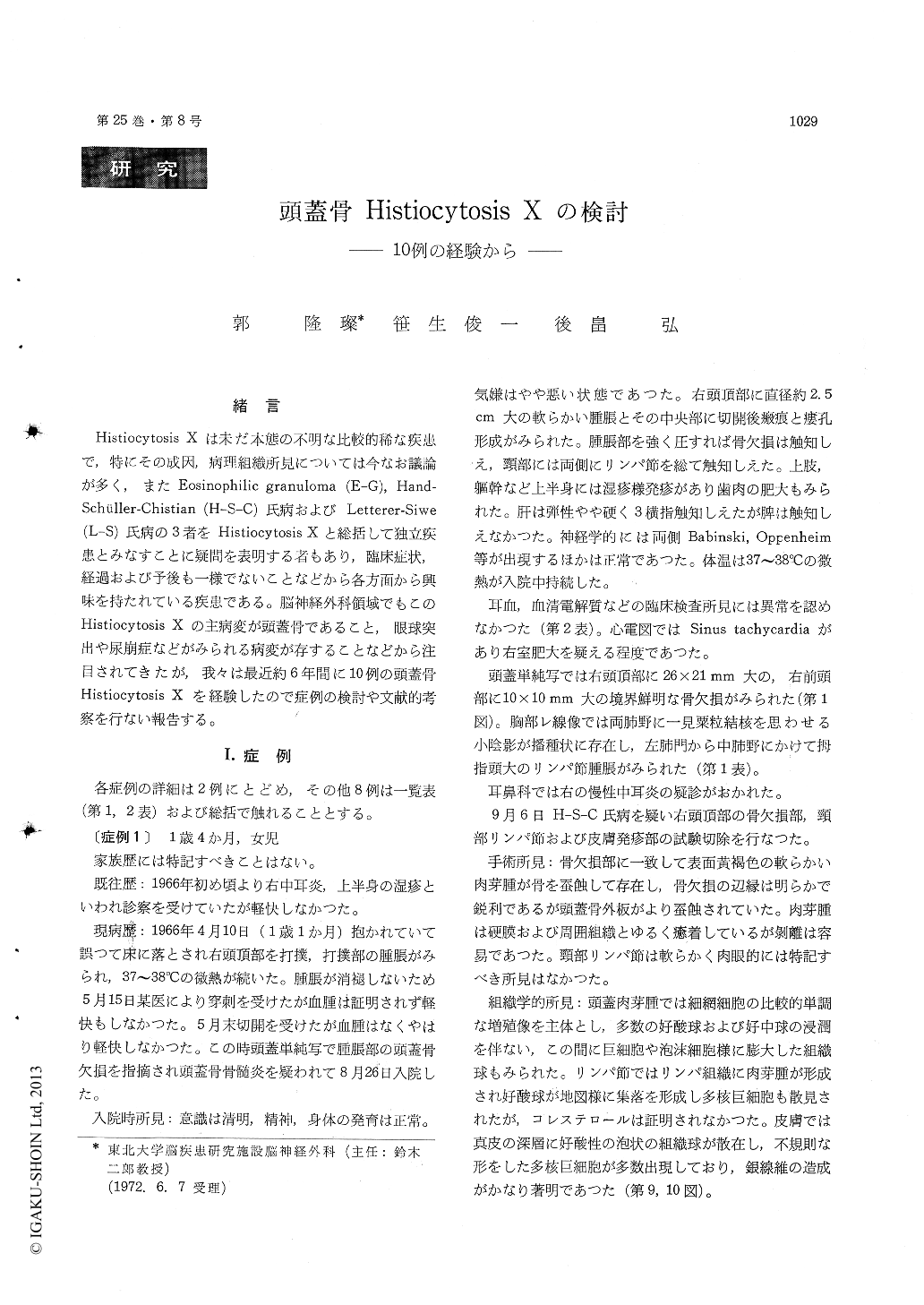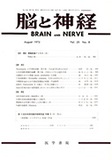Japanese
English
- 有料閲覧
- Abstract 文献概要
- 1ページ目 Look Inside
緒言
Histiocytosis Xは未だ本態の不明な比較的稀な疾患で,特にその成因,病理組織所見については今なお議論が多く,またEosinophilic granuloma (E-G),Hand—Schuller Chistian (H-S-C)氏病およびLetterer-Siwe(L-S)氏病の3者をHistiocytosis Xと総括して独立疾患とみなすことに疑問を表明する者もあり,臨床症状,経過および予後も一様でないことなどから各方面から興味を持たれている疾患である。脳神経外科領域でもこのHistiocytosis Xの主病変が頭蓋骨であること,眼球突出や尿崩症などがみられる病変が存することなどから注目されてきたが,我々は最近約6年間に10例の頭蓋骨Histiocytosis Xを経験したので症例の検討や文献的考察を行ない報告する。
Clinical and pathological aspects of 10 cases of cranial "histiocytosis X" were discussed reviewing the research history on literature.
Ten cases of cranial "histiocytosis X" were ex-perienced in our affiliating hospital during recent 6 years.
The patients were mostly children. Seven cases of them were 15 years old or younger, including 4 cases of under 5 years of age.
Destructive lesion of the skull was single in 4 cases and multiple in another 1 case. The 4 th lumbar vertebra or bilateral femur destruction was in the other 2 cases respectively, while in the re-maining 3 cases soft tissue lesion was also invaded. They were histopathologically classified into 2 groups of 7 cases of eosinophilic granuroma type and 3 cases of Hand-Schuller-Christian disease type. Some obsolete blunt trauma was revealed locating just on the site of lesion according to their past history in 5 cases.
The most common clinical symptoms were swell-ing and pain on the destructive lesion. Not any specific finding was noted on laboratory or neuro-logical examination.
Skull film showed single or multiple, clearly margined bone destruction.
Treatment was done as follows : Excision of granuloma in 8 cases, excision with additional steroid therapy in 1 case, excision, steroids andirradiation in the remaining 1 case.
Among these, 7 patients who had the lesion in the bone alone were well on follow up study 2 months to 5 years and 4 months averaging 2 years and 5 months after the first observation. Spon-taneous disappearing of the residual lesion was also noticed on one of them on follow up studyabout 3 years after the anavoidable incomplete surgery. Out of 3 cases in which the lesion in-vaded soft tissue, one was well 2 years and 9 months, one had recurrence now 1 year and 11 months, and the last one died of its recurrence 2 years and 9 months after their first consultation.

Copyright © 1973, Igaku-Shoin Ltd. All rights reserved.


